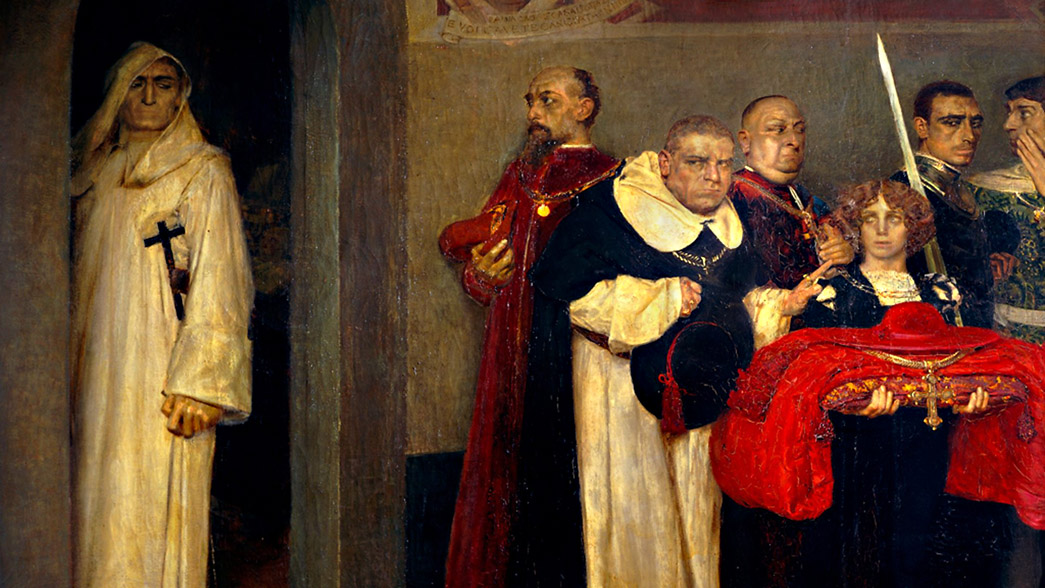
Savoranola & Pope Alexander VI
- What: Savonarola refusing the honour offered by Pope Alexander VI, by Giulio Bargellini (1875-1936), 1897, oil on canvas. Renaissance, Italy, 15th century. Roman Museum in the Palazzo Braschi near Piazza Navona.
This painting is so obvious with bodylanguage that I would like to include it here:
Savoranola refusing the 'galero' (broad-trimmed hat of a cardinal) offered by the infamous Pope Alexander VI.
"In 1495, when Florence refused to join Pope Alexander VI's Holy League against the French, the Vatican summoned Savonarola to Rome. He disobeyed, and further defied the pope by preaching under a ban, highlighting his campaign for reform with processions, bonfires of the vanities, and pious theatricals. In retaliation, Pope Alexander excommunicated Savonarola in May 1497 and threatened to place Florence under an interdict. A trial by fire proposed by a rival Florentine preacher in April 1498 to test Savonarola's divine mandate turned into a fiasco, and popular opinion turned against him. Savonarola and two of his supporting friars were imprisoned. On 23 May 1498, Church and civil authorities condemned, hanged, and burned the bodies of the three friars in the main square of Florence"
Wikipedia
Savoranola refusing the 'galero' (broad-trimmed hat of a cardinal) offered by the infamous Pope Alexander IV.
"In the painting, in front of the group on the right, a chubby man in a white habit and black cloak is Pope Alexander VI. A young deacon standing next to him holds a cardinal's robe in his hand. It seems that the pope intended to give Savonarola a cardinalship. However, Savonarola refuses and leaves the room. The eyes of the pope who notices and the eyes of Savonarola who look proudly are in contrast." Hyekyung Kim (Serena, Senior Researcher, East Asia Evangelization Institute, living in Florence, Italy)"Anything that is too strong will break. Having antagonized the Medici and the church for too long, Savonarola's unyielding attitude and politics when he took the helm were disappointing. The economy, where everything was banned, shrank. Not too long ago, the citizens who shed tears over his sermons were calm. Looking at the journey from republicanism to ‘theocracy’ through Savonarola, a more secular and conservative political model was created, and he became a figure who influenced Luther’s religious reform following John Wycliffe and Jan Hus."
